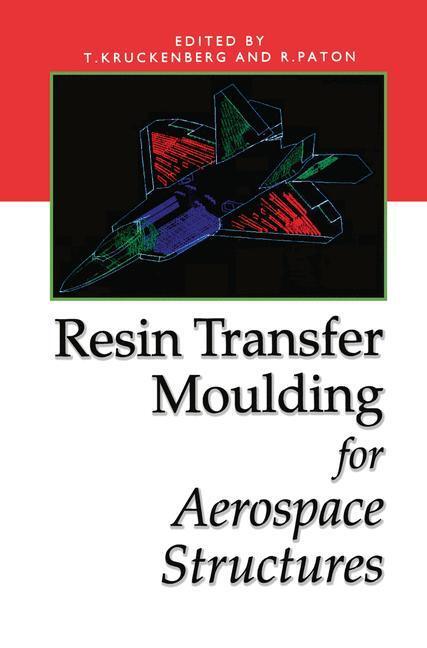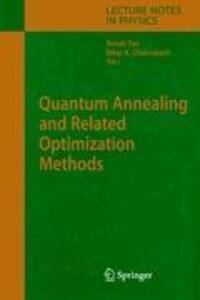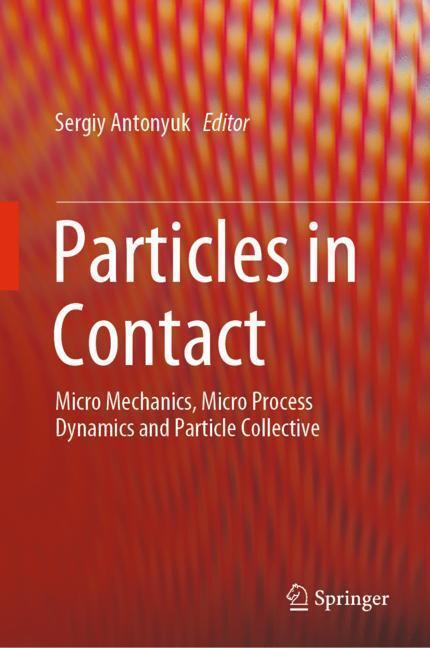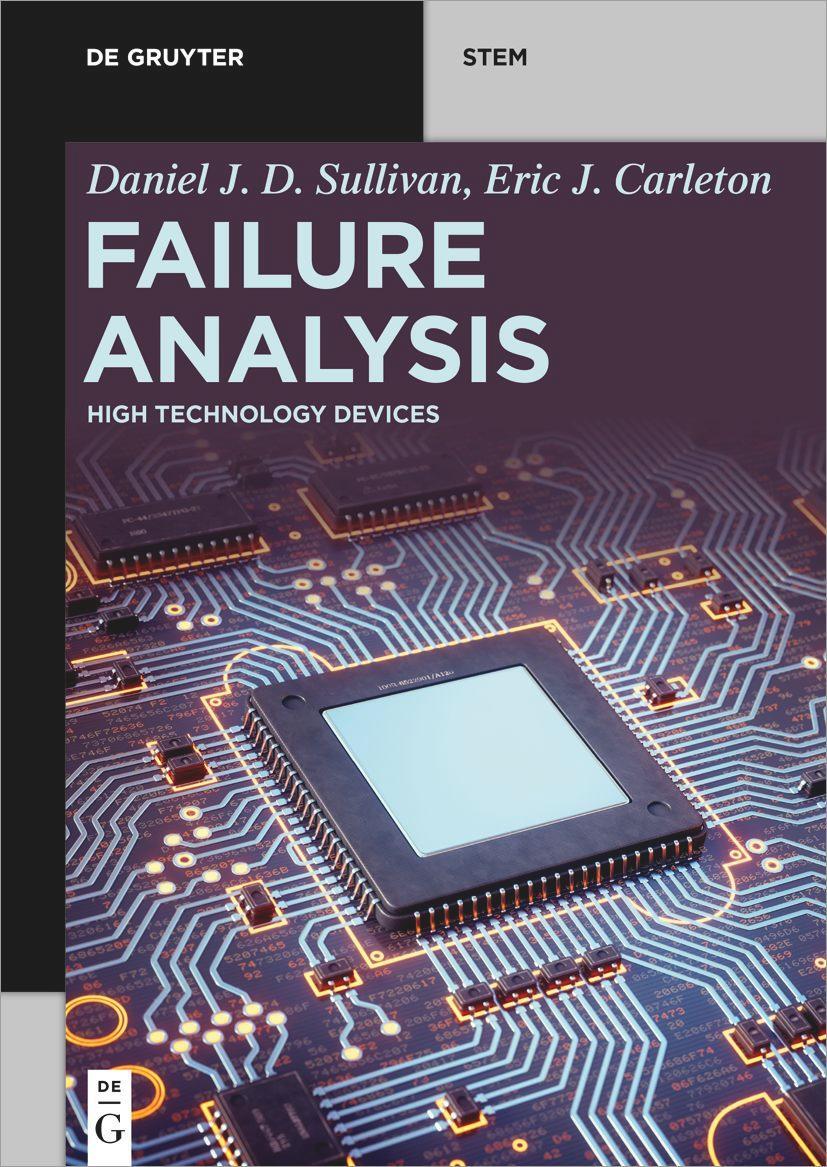Dekorationsartikel gehören nicht zum Leistungsumfang.
Sprache:
Englisch
213,99 €*
Versandkostenfrei per Post / DHL
Aktuell nicht verfügbar
Kategorien:
Beschreibung
Resin Transfer Moulding and other similar 'liquid moulding' manufacturing methods have been used to make non-structural composites for the last 35 years. However, in the last eight years these methods have become the subject of enormous interest by aerospace manufacturing companies.
Resin Transfer Moulding for Aerospace Structures describes all aspects of Resin Transfer Moulding (RTM) for aerospace structures. Written by an international team of experts, from both industry and academia, it is a comprehensive work providing complete and detailed information on the process of RTM from theoretical modelling to practical experience. With subjects including manufacturing, tooling, fabric design and flow modelling all covered, this book is an invaluable up-to-the-minute reference source which provides the reader with a good understanding of RTM and its possible uses, especially for high performance applications.
Resin Transfer Moulding for Aerospace Structures is an ideal guide for those in the aerospace and related industries, who want to understand and utilize RTM, as well as those directly involved in the RTM industry.
Resin Transfer Moulding for Aerospace Structures describes all aspects of Resin Transfer Moulding (RTM) for aerospace structures. Written by an international team of experts, from both industry and academia, it is a comprehensive work providing complete and detailed information on the process of RTM from theoretical modelling to practical experience. With subjects including manufacturing, tooling, fabric design and flow modelling all covered, this book is an invaluable up-to-the-minute reference source which provides the reader with a good understanding of RTM and its possible uses, especially for high performance applications.
Resin Transfer Moulding for Aerospace Structures is an ideal guide for those in the aerospace and related industries, who want to understand and utilize RTM, as well as those directly involved in the RTM industry.
Resin Transfer Moulding and other similar 'liquid moulding' manufacturing methods have been used to make non-structural composites for the last 35 years. However, in the last eight years these methods have become the subject of enormous interest by aerospace manufacturing companies.
Resin Transfer Moulding for Aerospace Structures describes all aspects of Resin Transfer Moulding (RTM) for aerospace structures. Written by an international team of experts, from both industry and academia, it is a comprehensive work providing complete and detailed information on the process of RTM from theoretical modelling to practical experience. With subjects including manufacturing, tooling, fabric design and flow modelling all covered, this book is an invaluable up-to-the-minute reference source which provides the reader with a good understanding of RTM and its possible uses, especially for high performance applications.
Resin Transfer Moulding for Aerospace Structures is an ideal guide for those in the aerospace and related industries, who want to understand and utilize RTM, as well as those directly involved in the RTM industry.
Resin Transfer Moulding for Aerospace Structures describes all aspects of Resin Transfer Moulding (RTM) for aerospace structures. Written by an international team of experts, from both industry and academia, it is a comprehensive work providing complete and detailed information on the process of RTM from theoretical modelling to practical experience. With subjects including manufacturing, tooling, fabric design and flow modelling all covered, this book is an invaluable up-to-the-minute reference source which provides the reader with a good understanding of RTM and its possible uses, especially for high performance applications.
Resin Transfer Moulding for Aerospace Structures is an ideal guide for those in the aerospace and related industries, who want to understand and utilize RTM, as well as those directly involved in the RTM industry.
Inhaltsverzeichnis
1 Introduction to resin transfer moulding.- 1.1 Introduction.- 1.2 Current and future applications for resin transfer moulding and resin film infusion.- References.- 2 Injection equipment.- 2.1 Introduction.- 2.2 Selection considerations.- 2.3 Basic principles of resin delivery for resin transfer moulding.- 2.4 Conclusions.- References.- List of manufacturers.- 3 Materials.- 3.1 Introduction.- 3.2 Fibre reinforcements.- 3.3 Conclusions.- References.- List of manufacturers.- 4 Advanced reinforcements.- 4.1 Introduction.- 4.2 Stitching.- 4.3 Weaving.- 4.4 Braiding.- 4.5 Knitting.- 4.6 Non-crimp fabric.- 4.7 Conclusions.- References.- 5 Fabric drape modelling and preform design.- 5.1 Introduction.- 5.2 Fundamentals of fabric deformation.- 5.3 Kinematic drape modelling.- 5.4 Drape model validation.- 5.5 Effects on processing and performance characteristics.- 5.6 Discussion.- References.- 6 Overview of fibre preforming.- 6.1 Fibre preforming - why is it needed?.- 6.2 Use of binders and tackifiers for fibre preforming.- 6.3 Fibre preforming techniques.- 6.4 Net-shape preforming of woven fibre mats by means of tackifiers.- 6.5 Design of preform tools.- 6.6 Design of preforming equipment.- 6.7 Preform storage.- 6.8 Conclusions.- References.- 7 Preform permeability.- 7.1 Introduction.- 7.2 Experimental methods.- 7.3 The general three-dimensional case.- 7.4 Summary.- References.- 8 Modelling and simulation of flow, heat transfer and cure.- 8.1 Introduction.- 8.2 Flow and preform architecture.- 8.3 Deformation of fabrics and its impact on flow.- 8.4 Analytical and numerical models for the preforming stage.- 8.5 Governing equations.- 8.6 Numerical formulations and simulations.- 8.7 Critical issues.- 8.8 Case study.- 8.9 The use of simulations as a design tool.- References.- 9Tooling fundamentals for resin transfer moulding.- 9.1 Introduction to resin transfer moulding tooling.- 9.2 Resin transfer moulding tooling materials and processes.- 9.3 Tooling cost considerations.- 9.4 Geometric considerations for moulds for use in resin transfer moulding.- 9.5 Thermal considerations in mould design in resin transfer moulding.- 9.6 Physical requirements of tooling in resin transfer moulding.- 9.7 Process considerations for resin transfer moulding tooling.- 9.8 Examples of resin transfer moulding tooling.- Reference.- Further reading.- 10 Tooling inserts for resin transfer moulding.- 10.1 Introduction.- 10.2 Foam cores.- 10.3 Honeycomb and other open-cell cores.- 10.4 Balsa wood cures.- 10.5 Bladders.- 10.6 Phase change tooling inserts.- 10.7 Extractable tooling inserts.- References.- 11 Manufacturing and tooling cost factors.- 11.1 Introduction.- 11.2 Recurring cost factors.- 11.3 Non-recurring cost factors.- 11.4 Applications.- 11.5 Case studies.- References.- 12 Data acquisition: monitoring resin position, reaction advancement and processing properties.- 12.1 Introduction.- 12.2 Instrumentation.- 12.3 Theory.- 12.4 Calibration: monitoring cure in multiple time-temperature processing cycles.- 12.5 Monitoring resin infiltration in conventional resin transfer moulding, and model verification.- 12.6 In situ real time flow sensing in resin film infusion and process monitoring.- 12.7 Smart automated control.- 12.8 Conclusions.- Acknowledgements.- References.- List of manufacturers.- 13 Quality and process control.- 13.1 Introduction.- 13.2 Defects.- 13.3 Process control.- 13.4 Quality control.- 13.5 Conclusions.- References.- 14 Qualification of resin transfer moulding for aerospace applications.- 14.1 Introduction.- 14.2 What is the qualificationprocess?.- 14.3 Methods of mechanical property qualification (structural testing).- 14.4 Proof-of-concept parts.- 14.5 Specifications.- 14.6 Qualification audits.- 14.7 Risk reduction.- 14.8 First-article qualification.- 14.9 Braided and three-dimensional woven structures.- 14.10 Conclusions.- F-22 programme: equivalence tests.- Appendix A Glossary.- Appendix B Conversion factors.
Details
| Erscheinungsjahr: | 1998 |
|---|---|
| Fachbereich: | Fertigungstechnik |
| Genre: | Technik |
| Rubrik: | Naturwissenschaften & Technik |
| Medium: | Buch |
| Seiten: | 548 |
| Inhalt: |
xxi
522 S. |
| ISBN-13: | 9780412731501 |
| ISBN-10: | 0412731509 |
| Sprache: | Englisch |
| Ausstattung / Beilage: | HC runder Rücken kaschiert |
| Einband: | Gebunden |
| Redaktion: |
Paton, R.
Kruckenberg, T. |
| Herausgeber: | T Kruckenberg/R Paton |
| Auflage: | 1998 |
| Hersteller: |
Springer Netherland
Springer Netherlands |
| Maße: | 241 x 160 x 34 mm |
| Von/Mit: | R. Paton (u. a.) |
| Erscheinungsdatum: | 31.12.1998 |
| Gewicht: | 0,98 kg |
Inhaltsverzeichnis
1 Introduction to resin transfer moulding.- 1.1 Introduction.- 1.2 Current and future applications for resin transfer moulding and resin film infusion.- References.- 2 Injection equipment.- 2.1 Introduction.- 2.2 Selection considerations.- 2.3 Basic principles of resin delivery for resin transfer moulding.- 2.4 Conclusions.- References.- List of manufacturers.- 3 Materials.- 3.1 Introduction.- 3.2 Fibre reinforcements.- 3.3 Conclusions.- References.- List of manufacturers.- 4 Advanced reinforcements.- 4.1 Introduction.- 4.2 Stitching.- 4.3 Weaving.- 4.4 Braiding.- 4.5 Knitting.- 4.6 Non-crimp fabric.- 4.7 Conclusions.- References.- 5 Fabric drape modelling and preform design.- 5.1 Introduction.- 5.2 Fundamentals of fabric deformation.- 5.3 Kinematic drape modelling.- 5.4 Drape model validation.- 5.5 Effects on processing and performance characteristics.- 5.6 Discussion.- References.- 6 Overview of fibre preforming.- 6.1 Fibre preforming - why is it needed?.- 6.2 Use of binders and tackifiers for fibre preforming.- 6.3 Fibre preforming techniques.- 6.4 Net-shape preforming of woven fibre mats by means of tackifiers.- 6.5 Design of preform tools.- 6.6 Design of preforming equipment.- 6.7 Preform storage.- 6.8 Conclusions.- References.- 7 Preform permeability.- 7.1 Introduction.- 7.2 Experimental methods.- 7.3 The general three-dimensional case.- 7.4 Summary.- References.- 8 Modelling and simulation of flow, heat transfer and cure.- 8.1 Introduction.- 8.2 Flow and preform architecture.- 8.3 Deformation of fabrics and its impact on flow.- 8.4 Analytical and numerical models for the preforming stage.- 8.5 Governing equations.- 8.6 Numerical formulations and simulations.- 8.7 Critical issues.- 8.8 Case study.- 8.9 The use of simulations as a design tool.- References.- 9Tooling fundamentals for resin transfer moulding.- 9.1 Introduction to resin transfer moulding tooling.- 9.2 Resin transfer moulding tooling materials and processes.- 9.3 Tooling cost considerations.- 9.4 Geometric considerations for moulds for use in resin transfer moulding.- 9.5 Thermal considerations in mould design in resin transfer moulding.- 9.6 Physical requirements of tooling in resin transfer moulding.- 9.7 Process considerations for resin transfer moulding tooling.- 9.8 Examples of resin transfer moulding tooling.- Reference.- Further reading.- 10 Tooling inserts for resin transfer moulding.- 10.1 Introduction.- 10.2 Foam cores.- 10.3 Honeycomb and other open-cell cores.- 10.4 Balsa wood cures.- 10.5 Bladders.- 10.6 Phase change tooling inserts.- 10.7 Extractable tooling inserts.- References.- 11 Manufacturing and tooling cost factors.- 11.1 Introduction.- 11.2 Recurring cost factors.- 11.3 Non-recurring cost factors.- 11.4 Applications.- 11.5 Case studies.- References.- 12 Data acquisition: monitoring resin position, reaction advancement and processing properties.- 12.1 Introduction.- 12.2 Instrumentation.- 12.3 Theory.- 12.4 Calibration: monitoring cure in multiple time-temperature processing cycles.- 12.5 Monitoring resin infiltration in conventional resin transfer moulding, and model verification.- 12.6 In situ real time flow sensing in resin film infusion and process monitoring.- 12.7 Smart automated control.- 12.8 Conclusions.- Acknowledgements.- References.- List of manufacturers.- 13 Quality and process control.- 13.1 Introduction.- 13.2 Defects.- 13.3 Process control.- 13.4 Quality control.- 13.5 Conclusions.- References.- 14 Qualification of resin transfer moulding for aerospace applications.- 14.1 Introduction.- 14.2 What is the qualificationprocess?.- 14.3 Methods of mechanical property qualification (structural testing).- 14.4 Proof-of-concept parts.- 14.5 Specifications.- 14.6 Qualification audits.- 14.7 Risk reduction.- 14.8 First-article qualification.- 14.9 Braided and three-dimensional woven structures.- 14.10 Conclusions.- F-22 programme: equivalence tests.- Appendix A Glossary.- Appendix B Conversion factors.
Details
| Erscheinungsjahr: | 1998 |
|---|---|
| Fachbereich: | Fertigungstechnik |
| Genre: | Technik |
| Rubrik: | Naturwissenschaften & Technik |
| Medium: | Buch |
| Seiten: | 548 |
| Inhalt: |
xxi
522 S. |
| ISBN-13: | 9780412731501 |
| ISBN-10: | 0412731509 |
| Sprache: | Englisch |
| Ausstattung / Beilage: | HC runder Rücken kaschiert |
| Einband: | Gebunden |
| Redaktion: |
Paton, R.
Kruckenberg, T. |
| Herausgeber: | T Kruckenberg/R Paton |
| Auflage: | 1998 |
| Hersteller: |
Springer Netherland
Springer Netherlands |
| Maße: | 241 x 160 x 34 mm |
| Von/Mit: | R. Paton (u. a.) |
| Erscheinungsdatum: | 31.12.1998 |
| Gewicht: | 0,98 kg |
Warnhinweis










